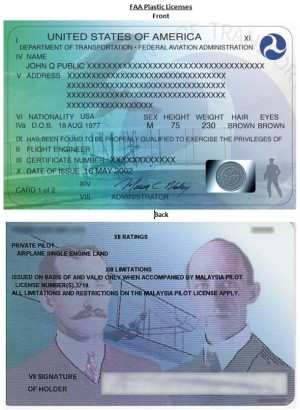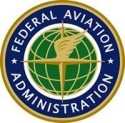Pilot Photo, 'Biometric' Components Not Incorporated In New
Plastic Licenses
 Saying, “This looks like a Three Stooges episode,”
U.S. House Transportation and Infrastructure Committee Republican
leader John L. Mica (R-FL) (pictured) called the FAA's
"faltering attempt" to produce an effective, tamper-proof license
for thousands of commercial passenger airline pilots another
"fiasco."
Saying, “This looks like a Three Stooges episode,”
U.S. House Transportation and Infrastructure Committee Republican
leader John L. Mica (R-FL) (pictured) called the FAA's
"faltering attempt" to produce an effective, tamper-proof license
for thousands of commercial passenger airline pilots another
"fiasco."
“When I chaired the Aviation Subcommittee six years ago,
we worked to require in law the development of a tamper-proof
pilot’s certificate or license and eliminate the Cracker Jack
prize paper identification that had been in use at the time,”
Mica said in a news release. “Written into the law are
requirements that the license would include the individual
pilot’s photo, as well as be tamper-proof and
biometrically-enabled.
“It is mind-boggling that six years later, after spending
millions of dollars, the FAA license still does not include the
pilot’s photo or any biometric measures. The only pilots
pictured on the license are Wilbur and Orville Wright,” Mica
said
Mica outlined his concerns with the failure to develop a
suitable pilot’s identification in a letter to FAA
Administrator Randy Babbitt, Department of Homeland Security (DHS)
Secretary Janet Napolitano, and TSA Administrator/Assistant
Secretary John Pistole.
The Intelligence Reform and Terrorism Prevention Act of 2004
included a provision directing the FAA Administrator to develop
improved pilot licenses or certificates that are resistant to
tampering, alteration, and counterfeiting. The law also stipulated
that they include a photograph of the pilot and accommodate a
digital photograph, a biometric identifier, or any other unique
identifier the Administrator considers necessary. Although new
pilot licenses are no longer paper, they still do not include any
of the other requirements set forth in the 2004 law.

Sample Plastic License
Mica added, “Although the FAA now requires all pilots to
have the plastic pilot certificates, I discovered that in issuing
these plastic licenses, the FAA has ignored the photograph and
biometric requirements set forth in the 2004 law and the 2005
deadline to meet those requirements. I want to know why these
agencies have seemingly ignored the 2004 law.”
FAA estimated the federal cost to replace the paper licenses
with plastic cards to be as much as $6.75 million over five
years.
“This fiasco was brought to us by three finger-pointing
agencies – DHS, TSA, and FAA – each blaming or waiting
for the others to act first. This looks like a Three Stooges
episode," he said.
“This is a sad commentary on federal ineptitude,
especially considering that a commercial pilot’s license is
one of the most important security documents issued by the
government.”
Mica said problems with the pilot certificate is only the latest
federal ID card "fiasco." He pointed out that a Transportation
Worker Identification Credential (TWIC) for maritime industry
workers was mandated in 2002, and after slow progress and missed
deadlines, TSA finally began issuing TWIC cards in October
2007.
“However, even after these delays, there are still no
approved readers in use to verify the TWIC’s biometric
identifiers. Without any readers, TWIC cards are no more useful as
a biometric ID than the plastic cards issued by the FAA,”
Mica said.

Most port employees in the United States are required to
purchase the $132.50 high tech TWIC card, the creation of which was
required under the Maritime Transportation Security Act of 2002.
After Congress grew frustrated with the slow development of the
cards, it set a deadline to issue TWIC cards in the SAFE PORT Act
of 2006. TSA missed the July 2007 deadline to issue the cards, and
has also missed the April 2009 deadline to issue final rules for
the deployment of TWIC readers. TSA is still conducting the pilot
program and does not expect to issue final rules for the readers
until late 2012.
Biometric identification cards are not a new technology for
government agencies. The U.S. Department of Defense, the U.S.
Department of Energy and most nuclear power plants regulated by the
Nuclear Regulatory Commission (NRC) employ biometric technologies
in access control, as does the New York Police Department. The
Associated press reports that the law does not require biometric
data, such as fingerprints and iris scans, to be included on the
cards, but that they have the capability to include such data on a
microchip. TSA said simply that it would respond to Congressman
Mica. The FAA said the licenses have the capacity to include a
biometric data chip, but that they has stopped short of requiring a
picture on the license because of the logistics involved in making
that happen during the changeover to the plastic licenses. Unlike
departments of motor vehicles, they said, there is not a system of
convenient FAA offices where pilots can simply stop in to have
their picture taken for a license. They also said the new licenses
have the capacity to include biometric data now. The agency
reportedly is considering an NPRM that would require pilots'
licenses to include a photograph of the pilot.
 Aero-News: Quote of the Day (12.07.25)
Aero-News: Quote of the Day (12.07.25) ANN's Daily Aero-Linx (12.07.25)
ANN's Daily Aero-Linx (12.07.25) NTSB Final Report: Lafferty Jack Sea Rey
NTSB Final Report: Lafferty Jack Sea Rey Classic Aero-TV: The B29 SuperFortress Doc - History in Flight
Classic Aero-TV: The B29 SuperFortress Doc - History in Flight Airborne 12.08.25: Samaritans Purse Hijack, FAA Med Relief, China Rocket Fail
Airborne 12.08.25: Samaritans Purse Hijack, FAA Med Relief, China Rocket Fail





